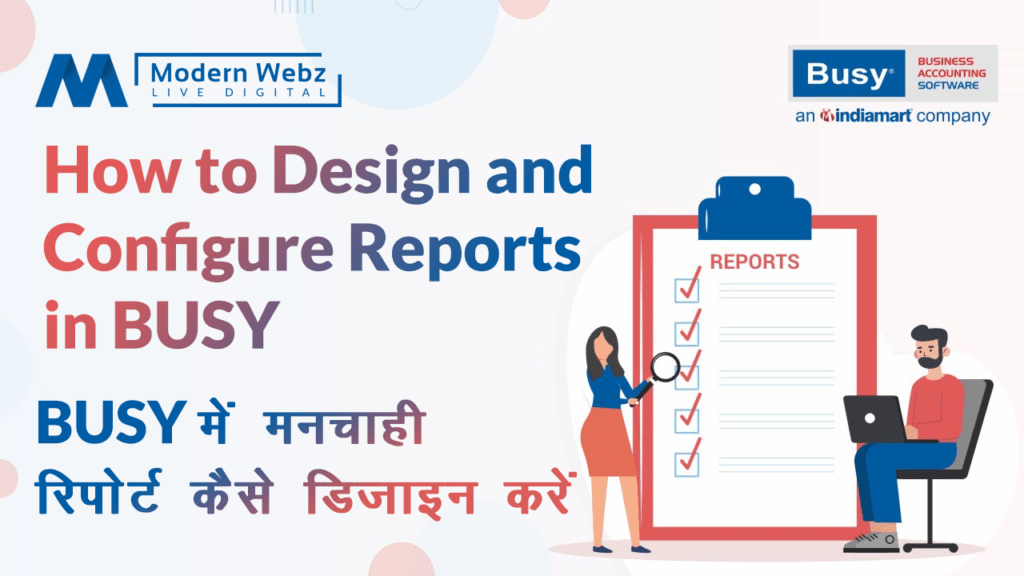Designing and Configuring Reports in BUSY Accounting Software: An In-depth Tutorial
Designing and configuring reports in busy accounting software is an important part of enabling, streamlining, and streamlining your accounting process. It is a great tool that helps you generate, view and manage business reports. In this tutorial, we will discuss in detail the process of Designing and Configuring reports in Busy Accounting Software. This tutorial will be provided in Hindi so that you can easily use this tool and make the accounting process perfect, streamlined and convenient.
Why is report design and configuration important?
Designing and configuring reports gives you the flexibility to enter business data on a website, PDF, email or in print form. This tool helps you to present your trading activities with accuracy, effectiveness and professionalism. Report design lets you organize data relevant to your business, and add charts, tables, graphics and diagrams so that you can strategically display different aspects of accounting. Plus, you can add various filters and sorting options that will be necessary for your business, sharing the basic concepts of the report.
Process of Report Design:
1. Knowledge of Report Design Tools in BUSY Accounting Software
2. Select or create a report template
3. Configure data sources and related actions
4. Configure Data Margins and WHO Group
5. Add Charts, Tables, and Graphics
6. Design and configure sorting
7. Preview and edit designs
8. Save and share report designs
Detail information of each step:
1. It is important for you to be familiar with the report design tools available in BUSY accounting software. Using this tool you can design and configure reports to make it easy to use for every English-speaking user.
2. You can design your report in copy or new nature by selecting and creating a new report template. It may also include information such as direction, size, and sorting options.
3. The Data Sources feature helps you configure the source of the data you want to display in your reports. You can additionally configure filters, indicators, level formation, and watchable topics to correlate with the data source.
4. Configuring Data Margins and WHO Groups helps you to align the data you want to display in your reports. You can position data by configuring the design, format, location, and arrangement of the margins so that it will appear clear and attractive in your reports.
5. Adding Charts, Tables, and Graphics You can visualize your reports using a variety of calculations, tables, and graphics. This will allow you to improve transparency and understanding by presenting and ignoring data neatly.
6. Design and sorting configuration let you make your reports look appropriately vibrant and professional. You can use the formatting tools to display beautiful colours, fonts, styles, and layouts, as well as modify sort, filter, and grouping options.
7. By previewing and editing the design, you get a chance to view, edit and make final revisions to your report before finalizing it. You ensure that those reports are displayed correctly by arrangement, alignment and display.
8. With save and share report designs, you can share your reports with the right people, users or groups. Once you have perfected the report design, you can save it in a private or public location so that you or other users can easily access it for future use.
**End:**

Recent Comments